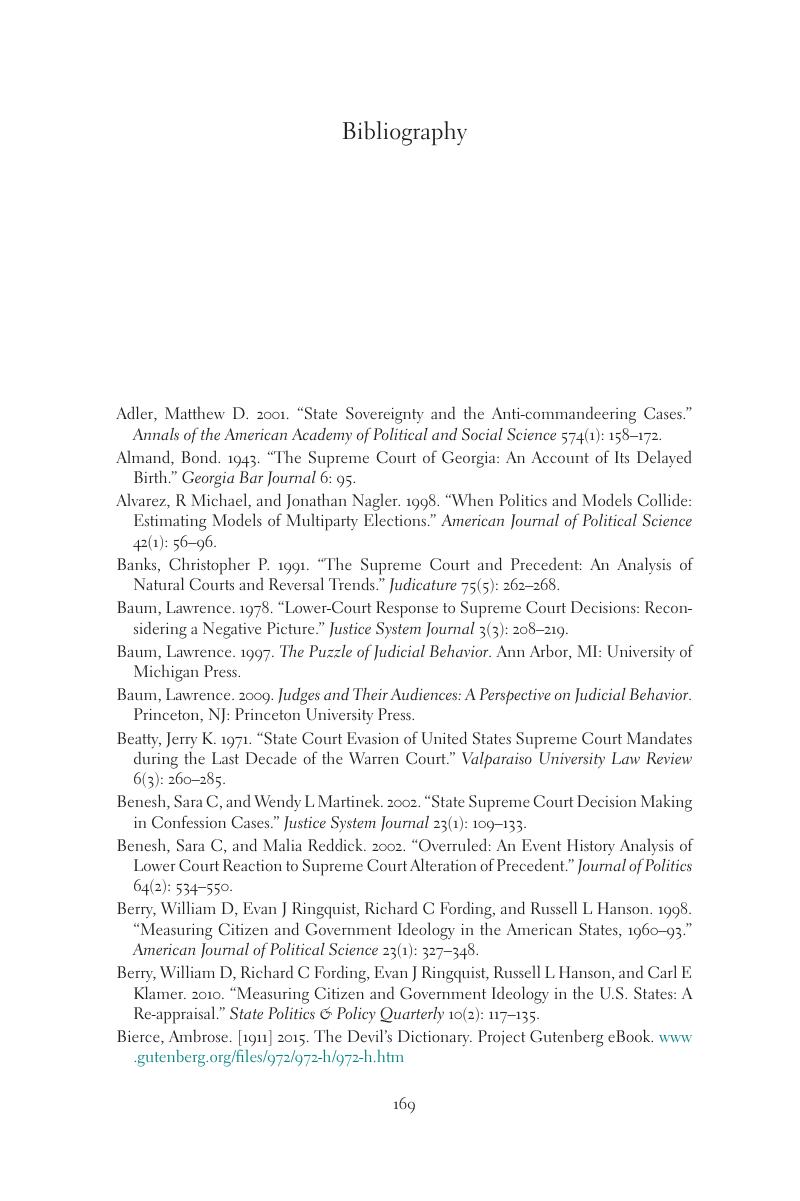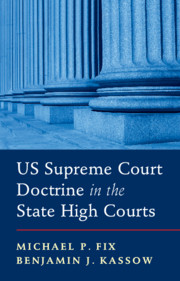Book contents
- Frontmatter
- Dedication
- Contents
- List of Figures
- List of Tables
- Table of Cases
- Acknowledgements
- 1 Introduction
- 2 The Role of Precedent: A Brief Hi
- 3 A Theory of State High Court Usage of US Supreme Court Precedent
- 4 Conceptualizing and Measuring How State High Courts Use US Supreme Court Opinions
- 5 State High Court Responses to Atkins v. Virginia: Characterized by Flexibility
- 6 State High Court Usage of Lemon v. Kurtzman: Examining a Case of Maximum Discretion
- 7 State High Court Usage of District of Columbia v. Heller and McDonald v. City of Chicago: Moderate Degrees of Flexibility
- 8 Concluding Thoughts and Future Extensions
- Bibliography
- Index
- References
Bibliography
Published online by Cambridge University Press: 25 August 2020
- Frontmatter
- Dedication
- Contents
- List of Figures
- List of Tables
- Table of Cases
- Acknowledgements
- 1 Introduction
- 2 The Role of Precedent: A Brief Hi
- 3 A Theory of State High Court Usage of US Supreme Court Precedent
- 4 Conceptualizing and Measuring How State High Courts Use US Supreme Court Opinions
- 5 State High Court Responses to Atkins v. Virginia: Characterized by Flexibility
- 6 State High Court Usage of Lemon v. Kurtzman: Examining a Case of Maximum Discretion
- 7 State High Court Usage of District of Columbia v. Heller and McDonald v. City of Chicago: Moderate Degrees of Flexibility
- 8 Concluding Thoughts and Future Extensions
- Bibliography
- Index
- References
Summary

- Type
- Chapter
- Information
- US Supreme Court Doctrine in the State High Courts , pp. 169 - 178Publisher: Cambridge University PressPrint publication year: 2020



